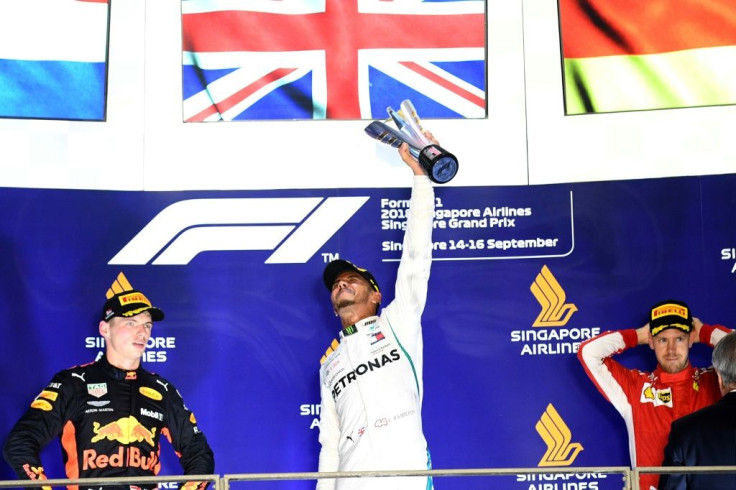F1 Rumors: Mercedes Director Reveals Shocking Truth About Lewis Hamilton's Win At Spanish GP
KEY POINTS
- Mercedes' Lewis Hamilton beat Red Bull's Max Verstappen at the recent Spanish Grand Prix
- Mercedes' track engineering director revealed how the crew pulled off the risky strategy that led to Hamilton's win
- The director admitted Mercedes was worried Red Bull might use the same strategy on Verstappen
One of Mercedes’ engineering team high-ups has opened up about how Lewis Hamilton pulled off a sensational win at the Spanish Grand Prix.
Despite Red Bull’s Max Verstappen holding the lead in the early going, Hamilton still managed to cop his third win of the season at the recent Spanish GP on Sunday. In a risky yet brilliant way, Mercedes put Hamilton on a two-stop strategy, which led to the seven-time world champion closing a 23-second deficit in 18 laps, leaving Red Bull behind with six laps to go.
Reflecting on the “gamble” Mercedes took, the team’s track engineering director Andrew Shovlin revealed that timing played a huge part in Hamilton’s win.
According to Shovlin, Mercedes was already thinking about pulling off the “two-stop” option in the middle of the race. Fortunately, the team managed to execute at the right time, and everything worked out well for Hamilton.
"We were managing and monitoring [the two-stop option] during the race,” Shovlin revealed in the Debrief from Mercedes. “The key question was what was the degradation during the race. The conditions during the race were very different from those during free practice. However, we could see from Max's [Verstappen] and Lewis' runs that the tyre wear was higher than we expected. Before that, we actually thought a one- and two-stop was pretty close.”
"With the new information about the wear, we saw in our tools that the two-stop suddenly came out as the clear winner,” he added. “When we got into the second stint, we really started to think about making it happen. We're making sure Lewis can actually catch up on that other set, we're making sure that when he does catch Max, that he has the pace to overtake him. If we go too early, his tires haven't got enough grip to pass. If we go too late, we haven't given him enough laps in the race to catch Verstappen. It was a case of fine-tuning and the decision wasn't taken until we pulled the trigger.”

Shovlin further admitted that the Mercedes crew was actually worried Red Bull might use the same strategy and bring Verstappen into the pits in order to allow him to chase Hamilton down with fresher tires.
“If we had done that you then have the disadvantage almost of being the race leader and Max could have done to Lewis what we did to him,” the director explained. “So, he could have converted to a two-stop as soon as Lewis had overtaken him, and this might have happened around the point that we decided to pull the trigger on the extra stop anyway.”
“The worst case scenario of the extra stop was that [Hamilton] would finish in P2, so for us it was worth a gamble but there was less chance that Max as the race leader was going to make that move for the extra stop,” he concluded.
© Copyright IBTimes 2024. All rights reserved.





















